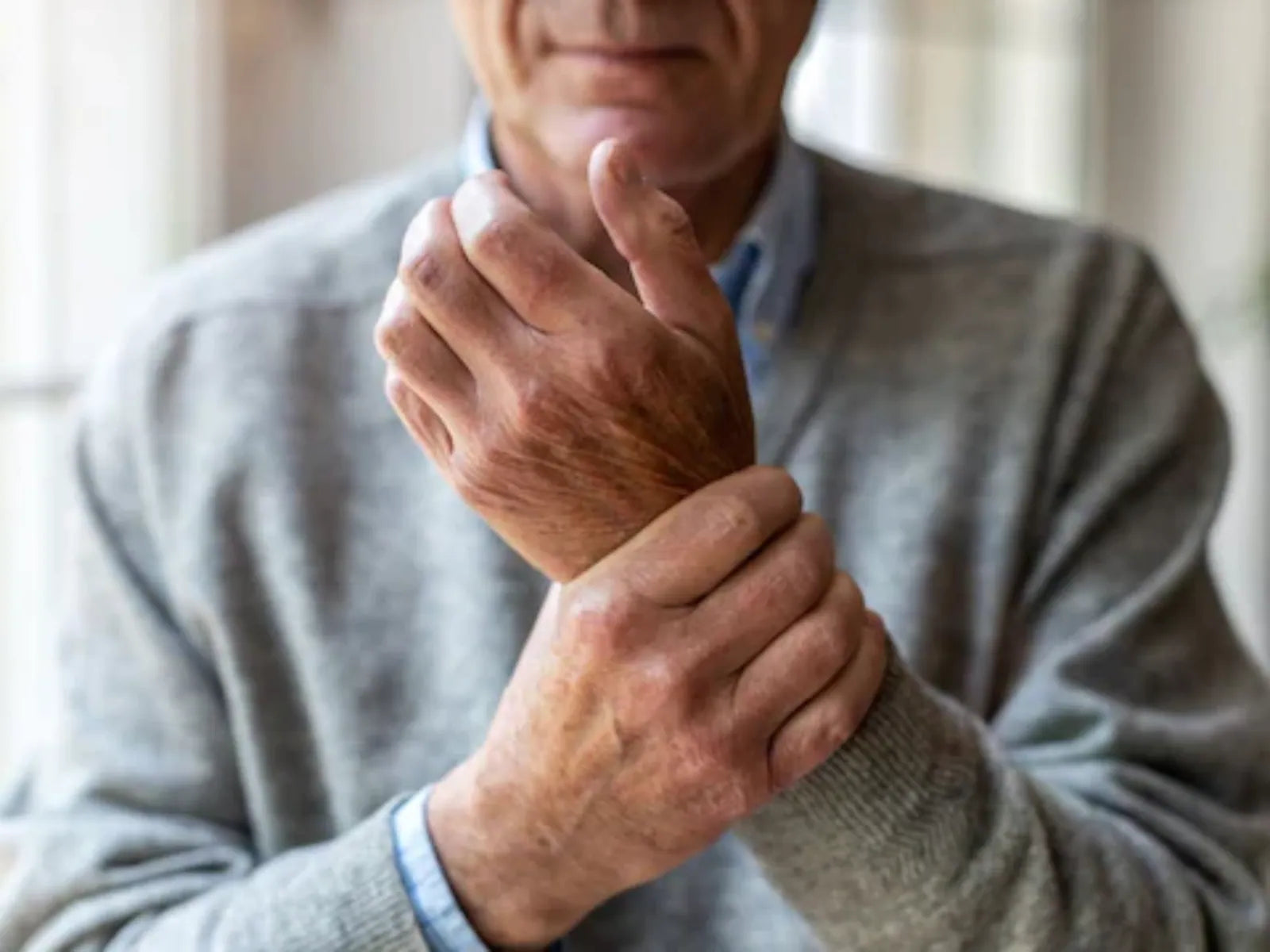Winter Is Here! 8 Tips For Joint Pain Relief
March 27 2023 – Nysh Website

As the winter approaches, people often complain of aching joints that only seem to get worse as the temperature drops. If your knees, hips, ankles, toes, and fingers plague you with constant dull aches every winter, you should try these simple pain relief tips to avoid the discomfort that the winters bring with them. But why do your joints pain more during the winter season?
Why Do Your Joints Pain More In Winter?
The cold weather naturally tenses your muscles and makes them tight. The tension makes the joints less mobile and flexible. The lower barometric pressure during the winter allows the tendons, muscles, and tissues surrounding the joints to expand and causes aching joints. The low temperatures of the winter can also thicken the fluid inside your joints, which makes them stiffer. So to combat your stiff and aching joints this winter, you can try these easy joint pain relief tips.
8 Tips For Joint Pain Relief For Winters
- Dress Warm
- Physical Activity
- Weight Management
- Stay Hydrated
- Balanced Diet
- Heat Therapy
- Vitamin D Supplements
- Massages
1. Dress Warm
Wearing plenty of layers and keeping your body warm from the external cold is super important during the winter. When your hands and feet are, they tend to cause pain in the joints of the fingers and toes. To avoid this ensure that your wear warm thermal gloves and socks to keep the joints from getting in contact with the cold atmosphere.
By dressing in layers, you are essentially creating warm pockets of air that protect you from the cold. This facilitates in maintaining a healthy body temperature and reduces the chances of getting affected by the cold air. Just keep in mind not that the layers are loose enough to facilitate blood circulation and you don’t feel too stuffy.
2. Physical Activity
By keeping your body active and engaging in regular physical activity, you are essentially increasing your body temperature naturally. Any type of physical activity keeps your joints healthy and mobile. Exercise also increases blood circulation in the body and in turn increases body heat.
It further helps develop strong muscles that help support and protect your joints. Engaging in some form of physical activity helps reduce joint pain, promotes better sleep, and improves daily functioning. Whether you indulge in swimming, cycling, or even choose to go for a walk, it will certainly help with joint pain relief.
3. Weight Management
During the winter, people tend to eat more to provide the body with enough fuel to keep itself warm and maintain its temperature. But one should also take care not to overindulge themselves and keep their weight in check. Weight gain will start to affect your knees, ankles, and other joints.
So keeping your diet and weight under control is important. This does not mean that you eat less or begin dieting. Rather as a pro tip, simply try to maintain your current weight. Eat a good healthy diet and exercise regularly and you wouldn’t have to worry about sudden weight gain.
4. Stay Hydrated
Staying hydrated is an important part of our daily life, irrespective of the season. But it is especially important to keep your body hydrated during the winter. Dehydration can cause your joints to stiffen and ache even more. People often think that hydration is crucial during summers when you’re body loses water through sweat, but staying hydrated is just as crucial in a cold climate.
During the winter, the goal is to keep your body warm and maintain your body temperature, and for this warm drinks like warm tea, milk, hot chocolate, or even warm water are great. You can even opt for hot broths and soups if constantly sipping on water seems tedious.
5. Balanced Diet
Eating a healthy, balanced diet all around the year is essential. In the cold winters, a balanced diet will ensure that your body receives the essential nutrients and is protected from various illnesses like common colds and flu, which are prevalent during the winters.
Ensure that your diet has lots of fruits and vegetables, lean meats, and whole grains for wholesome nutrition. Try and avoid processed foods, processed sugars, and saturated fats as much as possible. You can add foods that are naturally rich in antioxidants and have anti-inflammatory properties like turmeric, garlic, berries, and dark leafy greens.
6. Heat Therapy
Beat the winter chill with heat therapy. If you’re facing sharp pain or a constant dull ache in your joints, even after layering clothes, applying an external source of heat to the aching joints can be extremely beneficial and soothing. You can opt for electric heating pads, or hot water bags, or soak a towel in warm water and provide heat to your joints.
The external heat will help relieve the pain and can also aid with the stiffness of joints. You can also apply capsaicin gels or pain relief patches as they also have warming agents that provide heat to the joints.
7. Vitamin D Supplements
If you have a vitamin D deficiency, then there are chances of having an increased sensitivity to joint pain. And during the winter months, the sun sets earlier or is hidden behind cloud cover. This can make it difficult to get your daily dose of vitamin D. For this reason, adding a vitamin D supplement to your daily schedule can be beneficial. But before you decide to self-medicate, it’s always best to have it cleared with the doctors. So, make sure you discuss adding supplements with your doctor.
8. Massages
Winters can elevate your joint pain, but also makes one more prone to feeling low and blue. A great way to improve both your mood and joint pain is by getting a massage. Massages can help relieve pain in your joints and can aid with muscle relaxation and lessen the tightness and stiffness you might experience. Furthermore, massages stimulate your body temperature and increase blood flow throughout the body. They also relax your mind and can be extremely de-stressing.
Summing Up
Winters can bring with them stiff muscles, aching joints, and cold, frigid limbs. But it doesn’t necessarily mean that you have to battle through constant pain. With these simple and easy tips, you can prepare your body and joints for the winter and enjoy the holiday season in all its winter glory!
FAQs
What Is The Best Thing To Relieve Joint Pain?
For quick pain relief using a heating pad or taking a warm bath can help relieve joint pain as they loosen the joint and relax the surrounding muscles. You can also apply pain relief patches or capsaicin ointments as they warm your joints.
What Vitamin Is Good For Joint Pain?
Vitamin D is really important for healthy joints. When there is a Vitamin D deficiency, you may face some pain in your joints. Vitamin D has anti-inflammatory properties that help relieve joint pain in conditions such as arthritis.
What Is The Fastest Way To Reduce Joint Inflammation?
To reduce inflammation or swelling in your joints, you can use the RICE method - raise, ice, compress, and elevate. First, raise your inflamed joint or limb, then apply ice packs to bring down the swelling. Then you can compress or wrap the joint with a medical bandage and finally keep the inflamed joint elevated.
Can Dehydration Cause Joint Pain?
Dehydration can cause muscle spasms and cramping which can lead to joint pain. It results in lower blood volume and causes an overall decline in functioning and joint health.

0 comments